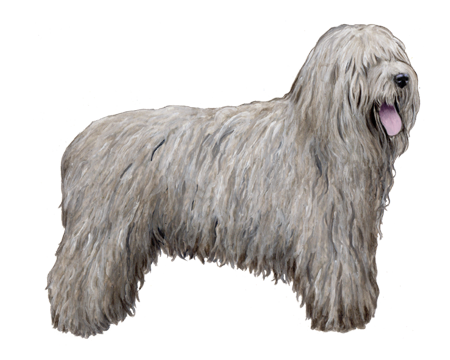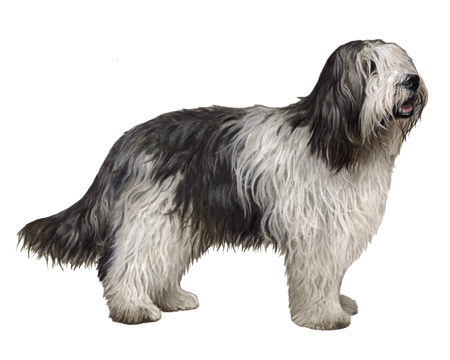
Belgian Laekenois
The Belgian Laekenois is a hard-working shepherd dog with a rumpled-looking coat and an affectionate personality. These pups need to stay active (no job is too small for the Laekenois!) and love participating in all aspects of family life.
Interested in discovering if your dog is a Belgian Laekenois?
Check out Wisdom Panel's DNA tests.

Belgian Laekenois Traits
General Appearance
The Belgian Laekenois is a medium-sized breed with a square, well-balanced build. These hardy dogs have a proud carriage and elegant overall appearance.
Coat and Colouring
Laekenois have rough, coarse coats that give them a slightly disheveled look. Their hair is about 2.5 inches long, and they have beards on their muzzles. (Don't let the wiry coat type fool you—Laekenois aren't a hypoallergenic breed.)
They come in shades of red or fawn, sometimes with traces of black on the muzzle and tail. White patches are allowed on the chest and tips of the toes.
Distinctive Physical Traits
Key features of the Laekenois include a long, lean head, broad chest, strong tail that reaches the hock, triangular, erect ears, and an intelligent expression.
Belgian Laekenois Temperament
Belgian Laekenois are intelligent, eager-to-please dogs. They get along well with respectful children and make loyal family companions. Though they're affectionate with all members of their pack, they often choose one person to be the primary recipient of their devotion.
The Laekenois doesn't like to spend much time alone in the house or unattended in the yard. These dogs want to be where their people are. Left to their own devices for too long, they may turn to destructive behaviors.
Despite being an active breed that likes to keep busy, the Laekenois is also happy to kick back and relax at the end of the day.


Belgian Laekenois History
In 1891, the newly formed Belgian Shepherd Club set out to catalog the defining characteristics of Belgium's native shepherd dogs. They arrived at a set of common traits, separated only by differences in coat type. Some kennel clubs consider the Belgian Shepherd a single breed with four coat varieties. Others, such as the American Kennel Club (AKC), recognize four distinct breeds: the Belgian Malinois, Belgian Tervuren, Belgian Sheepdog, and—rarest of all—the Belgian Laekenois.
The Belgian Laekenois' name is a tribute to the town of Laeken, where the breed originated. These dependable pups initially worked as guard dogs, protecting everything from flocks in the field to linens hanging on the line to dry. Later, they served as messenger dogs in World Wars I and II.
The Belgian Laekenois' population suffered greatly during and after the wars. Breeders worked diligently to restore its numbers, but it's still a rare breed today. The AKC recognized the Laekenois on July 1, 2020.
Belgian Laekenois Care
Nutrition
Belgian Laekenois thrive on a high-quality diet formulated for their life stage (e.g., puppy, adult, senior). Obesity in dogs is a growing health issue that's linked to other serious conditions. So, it's important to keep your pup at a healthy weight. Use a measuring cup to portion out their food and prevent overfeeding. And keep an eye on the number of treats you give them. As a guideline, they should make up no more than 10% of a dog's daily calories.
Grooming
The Belgian Laekenois' coat requires hand-stripping once or twice a year. This coat type should never be scissored, cut, or trimmed with clippers. Occasional baths will help keep them clean, but over-bathing can damage the coat's texture.
Regular nail trims should also be part of your pup's grooming routine. Nails that get too long can cause pain and potentially lead to problems running or walking. Lastly, aim to establish good dental hygiene habits—such as at-home teeth brushing and giving veterinarian-approved dental chews from time to time.
Exercise
As a working breed, the Belgian Laekenois requires daily exercise to stay physically and mentally fit. In addition to long walks and play sessions in the backyard, these dogs enjoy showing off their athletic abilities during activities such as agility, dock diving, tracking, herding, and rally.
Training
Laekenois require consistent, ongoing training—ideally from an experienced pet parent. They respond well to steady, positive reinforcement and varied, engaging training sessions.
Socializing your pup early in life will also help them grow into a well-mannered adult dog.
Breed Group
Herding
The herding group is a diverse category. These highly intelligent breeds were developed to guard and control the movement of livestock.























































